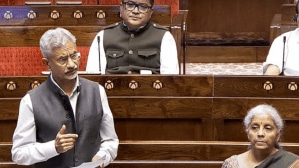House prices in India shot up 15 times over last 3 decades: Study
While per capita incomes during this time grew by around five times, property prices increased by around 15 times, outgrowing income growth by a factor of three, the study by Centre for Social and Economic Progress said.
 Housing prices in India have grown annually at the rate of 9.3 per cent from 1991 to 2021, according to a study. (Representational image via Canva)
Housing prices in India have grown annually at the rate of 9.3 per cent from 1991 to 2021, according to a study. (Representational image via Canva) Housing prices in India have grown annually at the rate of 9.3 per cent from 1991 to 2021, according to a study released by Centre for Social and Economic Progress (CSEP) in October.
The study titled ‘House Prices in India: How high and for how long?’ suggests that during the same period, real Gross Domestic Product (GDP) grew by 5.8 per cent annually – around four percentage points slower than property prices, implying that property prices far outgrew the incomes of the population.
While per capita incomes during this time grew by around five times, property prices increased by around 15 times, outgrowing income growth by a factor of three.
The study pointed out that housing in India was twice as expensive as it ought to be. “At a price-to-income ratio (PTI) of 11, housing in India is more than twice as expensive as its affordability benchmark of 5,” the study noted.
This figure, it stated, was far higher than developed nations like the USA, Australia and Germany but was comparable to developing nations like Bangladesh. In fact, India’s PTI was significantly lower compared to Sri Lanka (26.3 PTI) and China (29.1 PTI).
According to the study, while housing in India is more expensive than it should be, the rise in property pricing was not abnormal and was comparable to gold at 9.2 per cent and lower than the Sensex at 13.5 per cent over 30 years.
The study further pointed out that the real estate industry’s degree of transparency, including structural elements such as regulatory and legal architecture, was a major determinant in determining housing prices. Countries with transparent real estate industries had lower PTI as opposed to those countries with a more opaque real estate sector, the study pointed out.
It also noted that India was the “best improver” in the Asia Pacific (APAC) region over the past couple of years as a result of reforms like the digitisation of land records through the Digital India Land Record Modernization Programme, and the implementation of the Real Estate (Regulation and Development) Act.
The study further blamed the lack of credible and rigorous land use planning and implementation which limited land supply for boosting housing prices. It pointed out that just 28 per cent of Indian cities had approved master plans – this absence of planning makes financing difficult, which eventually makes it uncertain if the city will actually develop in the given timeline or not.
An opaque real estate sector further makes the entry of new real estate players difficult, giving rise to low competition. This, in turn, enables developers to boost prices owing to low supply.
The study pointed out that real estate in India had a significant number of firms making ‘supernormal profits’ (of more than 20 per cent) in the long run due to the demand-supply mismatch in housing.
Authors of the study, Shishir Gupta, Nandini Agnihotri and Annie George, recommend the implementation of policy reforms which focus on “releasing land supply in a transparent manner through credible and rigorous land use and implementation”.
According to them, this will encourage the entry of new real estate developers into the market and enable competition, resulting in a lowering of prices. In addition to lowering property prices, the following would also boost GDP growth and create non-farm employment.
The study used ‘anonymised transaction-level mortgage data’ from the Housing Development Finance Corporation Limited (HDFC), one of India’s largest housing finance companies. It used only those listed as flats or apartments because of the availability of price per sq ft measurements.
The Census of 2011 also points to the demand-supply mismatch in India’s housing market. According to 2011 figures, the number of vacant houses in India was 2.47 crores, or 90 per cent of the number of rented houses in the country. The Census data suggests that the proportionate increase in vacant houses between 2001 and 2011 was far greater than the increase in occupied houses.












